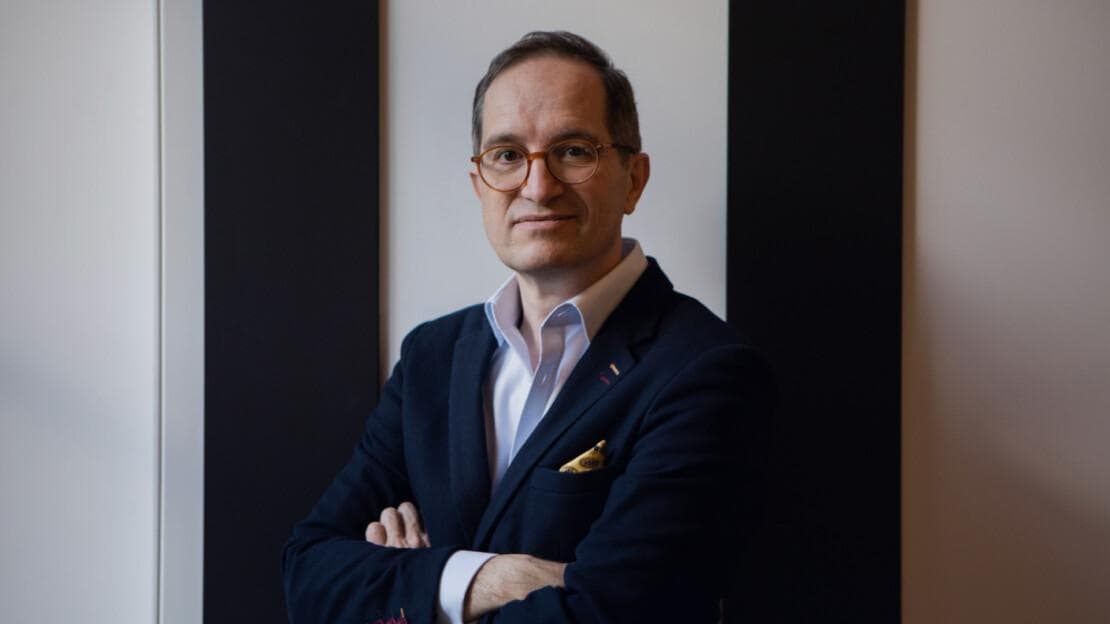22Apr2025
Peter Hinssen, entrepreneur, author, and pathological optimist, has spent over three decades riding the waves of technological change—and he’s never been more energized. “The speed of change is what I’m most excited about,” he says. “Just last week, I typed ‘Surprise me’ into ChatGPT and ended up in a full-blown role-playing game. I felt like a kid in a candy store.”
That childlike enthusiasm isn’t naive; it’s deliberate. It’s a mindset. And as Peter will share at Nordic Business Forum 2025, mindset is everything when it comes to innovation and leading through change. In this blog, we unpack his perspective on how organizations (and their leaders) can stay ahead in today’s ‘never-normal’ world.
Startups and Corporations Both Want What the Other Has
Peter knows the startup grind inside out, having built three companies. But for the past 15 years, he’s been on the other side—advising big corporations. “The irony is so striking. Startups want to be big. They dream of selling their business to Coca-Cola. But big companies? They want to feel young again.”
And therein lies the tension. Startups want structure, resources, and credibility. Enterprises want agility, creativity, and fun. “They all want what they don’t have,” Peter laughs. “But the truth is—they need each other.”
He believes this mutual admiration can be transformative if leaders focus less on copying operational models and more on nurturing the right cultural foundations.
“It’s not about adopting someone else’s agile framework. You can’t just copy-paste what Spotify does. That rarely works.”
Instead, Peter suggests companies should invest in building the right leadership capabilities and mindsets. “The most surprising thing in my 30-year career? It’s not the tech. It’s the realization that mindset, culture, and leadership are what truly drive success—or failure.”
Leaders Must Adapt to All Phases of Change
In Peter’s view, companies go through a constant loop of relevance and reinvention. First, they do the right things for their customers. Then, over time, relevance fades. “Whatever was ‘wow’ yesterday becomes ‘meh’ today. You can’t avoid it. Relevance naturally erodes.”
So what do successful companies do? They re-target by refocusing on market needs and then recharge by building new capabilities. This cycle used to happen once a decade. Now, it happens continuously.
“In the past, you hired one type of CEO for growth, another for turnaround. But today, change is constant. We need leaders who are comfortable in every stage—relevance, re-targeting, and recharging—sometimes all at once.”
And that requires a new kind of leadership education. “Most MBA programs were designed for the last century. We trained people for predictable environments, but that world doesn’t exist anymore. We need to rethink how we develop leaders for velocity, for ambiguity, for the ‘never normal’.”
Two Key Characteristics of Reinventive Companies
Peter has spent the last few years studying what he calls “Phoenix” companies—those rare organizations that don’t just adapt, they reinvent. He’s found that these companies share two surprising traits.
The first is long-term thinking. And not just any kind, but the kind often found in family-owned businesses. “It’s incredible how many of these companies have long-term control structures,” Peter notes. “Hermès is in its seventh generation. Walmart, although publicly traded, is still family-controlled. That gives them a deep, rooted perspective.”
The second is a sense of urgency—without panic.
“If you scare people, they freeze. But if you inspire them with a mission and a challenge, they rise to it.”
Leaders, he says, must walk this tightrope with empathy and clarity.
Peter also mentions that it’s important to avoid the trap of polarization. “Don’t frame change as old vs. new. That only creates resistance. If your legacy teams feel devalued, you’ll trigger a cultural clash.”
Instead, Phoenix companies strike a balance. They preserve their core while nurturing innovation on the edges. “Sometimes you have to protect your innovators. Give them space and help them thrive. Because the day after tomorrow needs to survive inside your company.”
Leaders Should Discipline Their Focus on the Future
When asked how they spend their time, leaders often say 70% of focus is on the present, 20% on near-term goals, and 10% on long-term innovation. But Peter says in reality it looks more like this: 93% today, 7% tomorrow—and 0% for the day after tomorrow.
That’s a problem.
“We all love the idea of long-term thinking. But the truth is, it gets pushed to the end of the list. And once it’s there, it never happens. There’s always a meeting, an email, a crisis.”
So what’s his advice?
“Flip it. Make time for the day after tomorrow first. Put it in your calendar, your board meetings, your team check-ins. That 10% could change your company’s trajectory.”
And remember—it’s not about predicting the future. According to Peter it’s about creating the discipline to imagine it, plan for it, and take small steps toward it every day.
What to Do Today to Lead into Tomorrow
Innovation isn’t a department. It’s a mindset—and one that must start with leadership. “The challenge isn’t the speed of change. It’s how fast we can change how we think.”
So if you’re leading a team or steering a company, don’t just look for the next tool or framework. Start by asking different questions. Make space for reinvention. Rethink how you hire, train, and empower your people.
And most of all, lean into the excitement of it all.
“I’m 55,” Peter says with a grin. “But I still feel that childlike thrill when I see what’s possible. The never-normal isn’t a threat. It’s the biggest opportunity we’ve ever had.”

 by:
by: 

